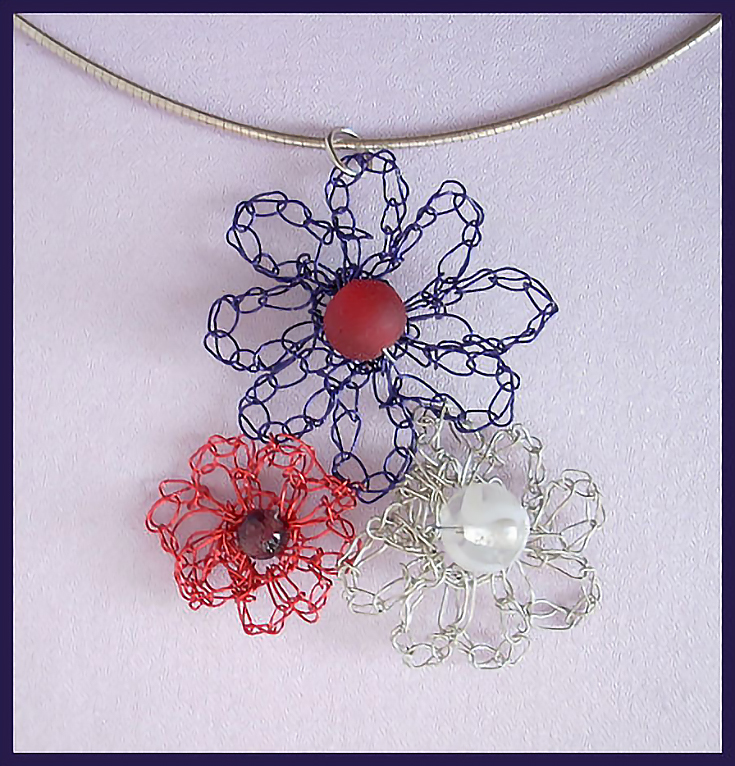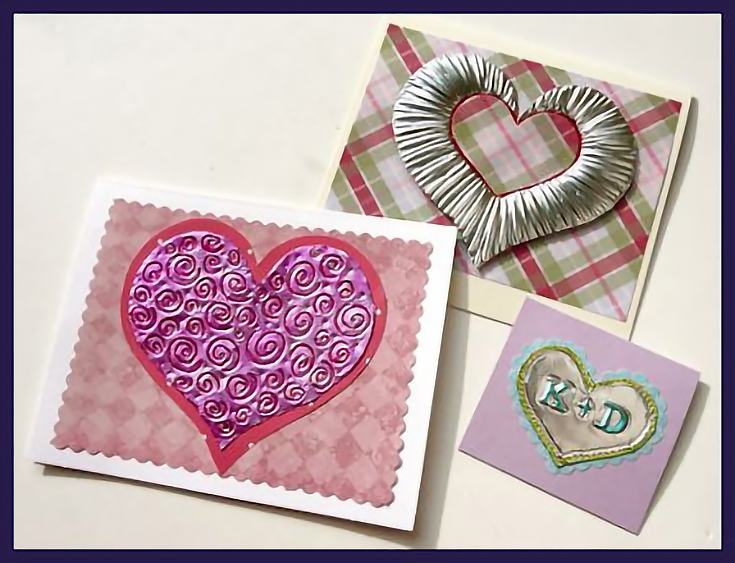
Having earned a degree in graphic design she set out to make a living as a graphic designer, but after a few years in the industry she found her career choice unsatisfying and yearned for the freedom to be more creative.
In 2005 she discovered podcasting, which led to blogging, which then led to a series of writing and teaching opportunities and eventually a whole new career. Today, three years later, she is fully self-employed and loving every minute of it.
Alyice: You’ve spent a lot of time lately blogging about ways to help artists build an online presence, and become profitable. When did you transition from artist to art activist? And how did that come about?
Diane: It happened so naturally that even I didn’t realize it was happening until recently!
It probably has a lot to do with my own evolution into creative self-employment. I’m kind of hard-wired to share things, so as I learn important new business ideas and techniques I immediately want to spread the word.
Not only that, but I adore the online craft community. For most of my life, I rarely met other crafters. My crafty passions weren’t considered that “cool.” Now, thanks to the Internet, we have this vibrant, global community of creative people. There’s so much collective wisdom, genius, and delight in this gathering that I find myself wanting to do everything I can to support it.
In addition, I feel pretty strongly about self-employment. Whether you’re 100% self-employed or you run an indie business alongside a full-time job, it can empower you in so many ways. It can improve your life drastically.
Alyice: Why do you think artists have such a difficult time believing in themselves, and their skills, enough to warrant earning a decent living?
Diane: Personally, I think it’s decades of cultural programming. I’m going to get a little nerdy here. For most of us, our notions of work come from very old, Industrial Age models. We were raised to go to school and learn things so we could be good employees at companies. That model worked great in the pre-Internet days.
But now, the Internet has opened up vast new possibilities, and it’s beginning to crumble the old structure of jobs and companies. This is both great and terrifying. Now, the responsibility for success lies solely with us.
Interestingly, the Internet is also crumbling the old “gatekeeper” system. There used to be a small group of people (editors, producers, gallery owners) who had the power to decide who was and was not a professional artist. Now, you can be a professional artist anytime you want to. This is both great and terrifying.
We’re all in for a rather chaotic ride in the coming years while our culture sorts itself out, and we all grow and change in response. I feel certain that, as long as we take baby steps, we’ll develop the belief in ourselves over time.
Alyice: How can artists begin to build the confidence necessary to start commanding a decent wage for their art; for their work?
Diane: Well, I think it’s a matter of both confidence and community. Guess what. . . I’m going to bring up the Internet again!
The Internet gives us the power to connect with people, and this enables us to locate that specific group of people who really “gets” our art, and us, and wants to support us. (For a more thorough discussion of this, see Kevin Kelly’s post, 1000 True Fans.)
Now corporate entities are another story. They are coping with the roiling cultural forces I mentioned a moment ago, and they’re struggling to remain profitable. This means that these are challenging times for artists trying to tango with corporate partners. Personally, I think that, in these times, if you take a bad deal from a company, it’s not that likely to lead to better deals in the future. It just identifies you in their eyes as someone who’ll take a bad deal. So you simply have to demand what you need from the beginning.
I think that one place a lot of artists fail is in even knowing what a “decent wage” is for them. Have they done the math on their living expenses? If they divide their monthly living expenses by a 160-hour work-month, it should tell them how much they need to make in an hour just to pay the bills. Then they must figure out how much profit they would like to make on top of that. It’s extremely powerful to know numbers.
It’s even more important to put some energy into using freely-available online tools to build that community of true fans. Then, when a corporate partner tries to offer you a raw deal, you’ll know you have support to fall back on, and you’re in a better position to refuse work that doesn’t pay you well.
Alyice: I recently read that you believe every artist can be profitable and still be generous with their craft. What are some of the ways an artist can share ideas about their craft without feeling as though they’re giving too much away?
Diane: Okay, here comes the Internet again. It’s also changing everything we know about information and intellectual property. The creative community is a community of sharing, and the way to gain recognition and reputation is to give freely of what you know.
Some artists are afraid of this idea, and that always makes me wonder: “Are you afraid you’ll never have another good idea again?” The universe is unlimited, and so is our creative potential.
This may sound a little harsh, but I think that artists who refuse to participate in the Internet community’s culture of sharing will simply suffer from decreasing opportunities, decreasing visibility, and decreasing reputation.
I don’t think there’s necessarily any way to “give too much away.” It’s definitely possible to give away more than you can sustain from a business perspective, but you are always in control of that balance. You know what kinds of work you’re most likely to be paid for. Outside that boundary, you can find a vast number of other possibilities to share.
If you’re a textile designer, for example, you don’t necessarily have to share all your trade secrets of textile design. But you could absolutely share some glimpses into your process of coming up with new designs, or your opinions on the best fabrics for printing.
Or, for that matter, something totally unrelated but still useful, like your favorite banana bread recipe or a crochet hat pattern. Many, many artists blog and share about one subject, but make their living from a different subject.
Alyice: One way you suggest that artists give of themselves is to share tutorials on their blogs. How can giving away tutorials build a paying target audience? And how many tutorials are too many? Why or why not?
Diane: Information-sharing, like in tutorials, has become the way we learn about each other and gain each other’s trust. It has also become a powerful engine for building your personal brand and audience. Those elements are vital to a sustainable business.
The more you share ideas with people, without expecting return, the more you’re seen as a knowledgeable and helpful person. This perception will always bring you more opportunities to be paid.
Now, it should be said, sometimes the road from tutorial to paycheck is direct and sometimes it’s not. I’ve shared a lot of tutorials, and eventually, this led me to obtaining a book deal with a publisher. That’s a pretty direct route. My tutorials have also led me to teach classes in my local community. That’s also direct.
Over time, my tutorials have brought me increased blog-traffic, which contributed to people seeing me as a successful blogger which led me to write e-books about blogging. That’s indirect.
I think it’s important to understand that you don’t just give out the tutorials and then wait for someone to notice you. Good tutorials will bring you an audience over time. Then your job is to figure out what that audience needs and find ways to provide it.
And just as with the previous question, I don’t think there can be “too many” free tutorials.
Alyice: You also suggest that some non-paying opportunities can ultimately be good for business. How can artists decipher the scams from the legitimate offers? What tips can you offer for scrutinizing a non-paid opportunity? (Would love for you to touch on non-paying publications, workshops, and guest designer spots.)
Diane: This landscape is changing a lot now as well. It used to be that the only way you could build an audience was to take lots of non-paying opportunities in exchange for “exposure.” Lord knows I’ve done my share of these. I’ve contributed craft designs to books for no pay. I’ve taught classes as a volunteer. I’ve given free designs to corporate websites.
Were these opportunities helpful to my career? Some were, but in retrospect, most weren’t. I’ve been able to gain far more exposure by sharing ideas and how-to’s on my own blog.
When someone offers you a non-paying opportunity, it’s important to look at what else you might gain from it.
Set “exposure” aside for the moment because rarely is that a valid benefit in these situations. Ask yourself, “Will the project give me a chance to work with someone who can benefit my career in future?”
Also ask questions like: Does the project give me a chance to learn a skill I’ve been wanting to learn? Does it give me a chance to practice my writing, photography, or video skills? Does it give me a chance to add something credible to my resume? If you’ve answered yes, then it might be worth your while.
(I also created this video tutorial to help people evaluate online opportunities in particular.)
Alyice: Before you go, can you give our readers a few pointers on using social media properly, so as not to appear spammy?
Diane: It’s important to understand the difference between broadcast marketing and engagement marketing.
Broadcast marketing is the stuff we all grew up with, like advertising. It’s where you make one marketing message and blast it out to as many people as possible, hoping just a few of them will bite. Using Twitter, Facebook, or blogs as broadcast marketing tools is a sure way to be seen as a spammer.
Instead, these tools are designed for engagement marketing. In engagement marketing, instead of blasting out one message, you reach out to people as individuals. You form relationships, and you build a community around yourself and your business. This community grows to trust you, and from that trust, they take an interest in your business.
I see so many people decide to start a blog, or join Twitter or Facebook, with the intention of marketing their small businesses and then they do nothing but post notice after notice of their business, without a scrap of personality or authenticity, and wonder why it’s not working.
Don’t be a business in the social media space. Be a person. Reach out to other people. Comment on their blogs, and respond to their updates on Twitter and Facebook. Start conversations. Ask questions. Listen.
Instead of telling people what you have for sale, tell them about you as an artist. Share your breakthroughs and struggles. Share your recommendations for materials, books, films, and websites. I promise you, these efforts will lead people to your business with an interested eye.
To learn more, please visit Diane Gilleland at http://www.craftypod.com.
This post may contain affiliate links.



